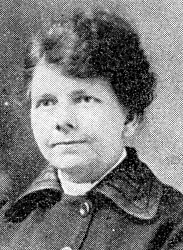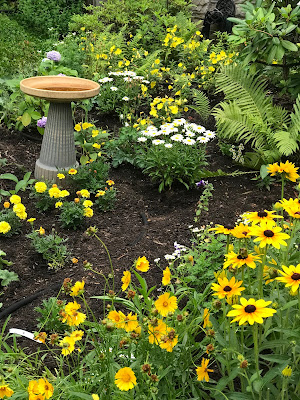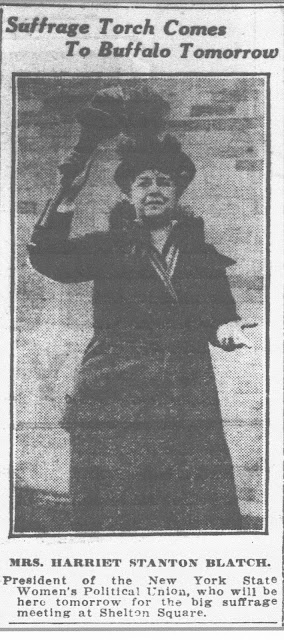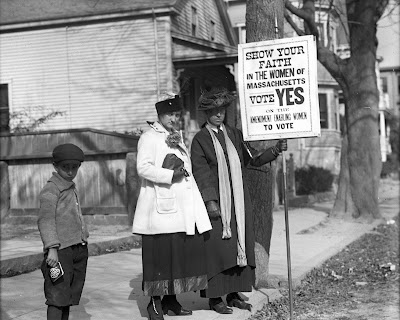The Silent Sentinels quietly protested the lack of women's suffrage in 1917.
Last week I saw a different trend during this pandemic.
Whether I talked to friends or family, read blog or facebook posts, morale had dropped and despair had crept into people's rhetoric.
Perhaps it was the length of time in lockdown, or anxiety about money, or the vague feeling of insecurity that limbo creates. But there was another factor that we can't discount--the images and footage of unmasked and armed people express their frustration at state capitals--and towards healthcare workers.
It seemed that during the weeks before the protests, folks attempted to face the epidemic and shoulder the burden together. The ugliness that filled our screens last week knocked the wind out of us many of us. I'm not suggesting the protests were the only reason for the drop in morale; my friend Chris who is a therapist, suggested it was a likely combination of some if not all of the factors listed above.
What struck me in all of this was the healthcare workers who tried to block the demonstrators, donned only in their scrubs and masks in what can only be referred to as a Tiananmen Square moment. And then I realized it:
They are the Silent Sentinels of our era.
Like the Silent Sentinels, the healthcare workers at the protests were predominately women. In 1917, the Silent Sentinels stood silently outside the White House and many simply held banners demanding the vote. Similarly, the nurses did not engage in conversation with the protestors. Many stood stoically with their arms crossed in front of them. Some of them in Pennsylvania and Washington D.C. held up signs, "I don't want you in my ICU, Go Home!"
Horror is horror and I'm fairly certain that Chris the therapist would agree. I can't imagine being incarcerated in a rat infested jail and beaten and tortured. I also cannot imagine devoting my career to healing and then have to helplessly witness patient after patient gurgle and gasp for their last breath.
I don't know how biker boys or screaming girls thought they could intimidate healthcare workers. These nurses and doctors have confronted the devil and that demon's name is Covid 19. All video footage of the workers share one commonality--a haunted horrified expression in their eyes and affect.
None of these workers will be the same again. Most will deal with PTSD later on. We don't know what happened to many of the Silent Sentinels later in their life--there is simply no research available on many of them. But I do know that some of them had PTSD later in life. Kate Heffelfinger of Shamokin, Pennsylvania for example, died in 1958 committed to a mental asylum.
Kate Heffelfinger
Annie Arniel
My father used to tell me people always have a choice: be part of the problem or part of the solution. This week, I witnessed people in my own neighborhood choose to be part of the solution--or at least express gratitude to counter the ugliness. Some have put lovely signs in their front yards, others like me are on a budget so we put hand made signs on our doors with messages like:
Thank you Healthcare workers!
Thank you Essential workers!
We ❤ nurses and doctors!
I've hung photos of the New Silent Sentinels in my sewing room. Their courage inspires me--in the hospitals and in the community. Like many of you, I'm tired of sewing masks but it is the one thing I can contribute these days.
The Great Depression lasted 12 years; we are only in the opening months of the pandemic. Still, there is hope on the horizon as Oxford scientists report they are seeing good results in a vaccine they are developing and other scientists are hopeful about possible cures. Until then, we need to bring out the best of each of us. We take care of ourselves, our families and our neighbors in whatever way we can.
I don't know who said this, but it isn't original: "Hate is easy; love takes courage."
Thank you to all who have had the love and courage to enable the rest of us to continue living our lives.
Tomorrow we will return to celebrating our suffragists and share in Flower Fridays.
Stay safe and well!




















































